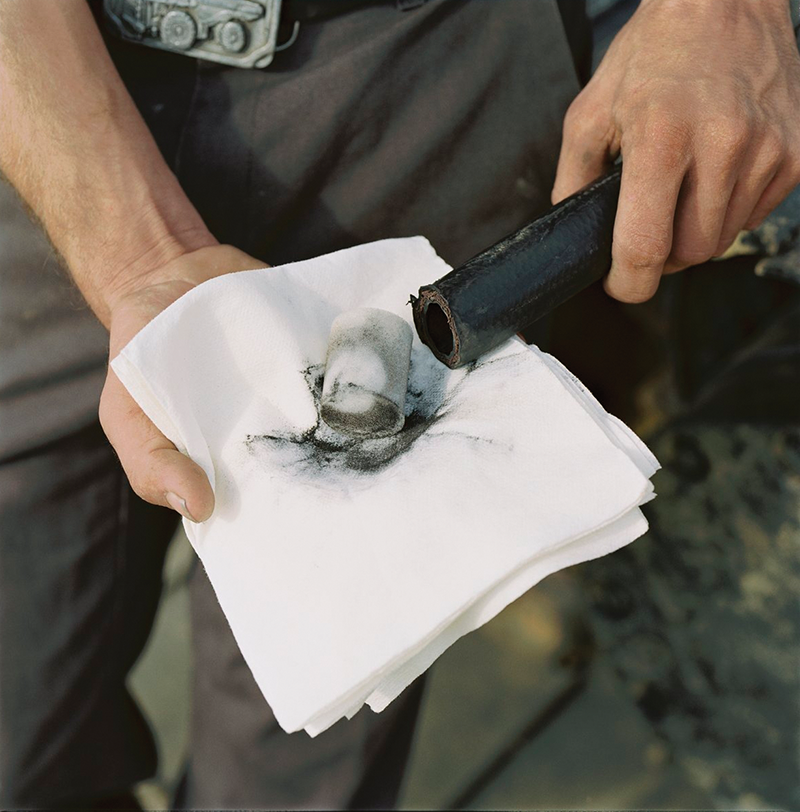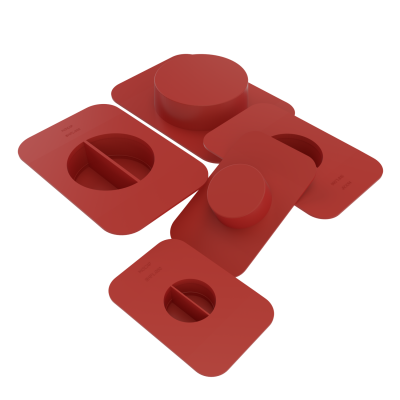The Crucial Role of Cleaning & Sealing Hydraulic Hoses & Tubes

By Lisa Orndorf, Ultra Clean Technologies Corp.
It is well-established that approximately 80% of hydraulic system failures can be attributed to contamination. Some of this contamination infiltrates the system through hydraulic hose and tube assemblies. This article underscores the significance of cleaning and sealing these assemblies, emphasizing how this practice can mitigate system downtime, reduce costly repairs, and address potential safety concerns. Hydraulic systems, which play a pivotal role in various industries such as construction, aerospace, automotive, manufacturing, and agriculture, rely on meticulous maintenance to ensure their longevity and reliability.
The Anatomy of Hydraulic Systems
Regardless of the specific application, hydraulic systems share fundamental components that enable them to provide power and control while operating safely and dependably. These components include hydraulic fluid, pumps, valves, and cylinders. The hydraulic fluid is pressurized by the pump and directed through the system, with valves regulating its flow and relieving pressure when necessary. The fluid’s energy is then converted into mechanical energy within the cylinders. This seamless operation depends heavily on the cleanliness and integrity of hydraulic hoses and tubes.
The Consequences of Neglecting Cleaning
Failure to clean and maintain hydraulic hoses and tubes can lead to the accumulation of contaminants, resulting in wear and tear that can ultimately culminate in catastrophic system failure. Even before such a failure occurs, the loss of production or performance is well-documented due to contaminated hydraulic fluid. This loss of efficiency can go unnoticed until it reaches significant levels, equivalent to losing a day of productivity each week.
The Evolving Challenge of Contamination
In the past, hydraulic systems operated at lower pressures and featured less stringent tolerances between metal-to-metal surfaces. Consequently, the focus was primarily on visible contamination. Today, however, we must also contend with invisible contaminants, including particles as minuscule as 2 to 5 microns. To put this into perspective, a 5-micron particle is 1/64 the size of a speck of dust on a TV screen. Given the tight clearances in modern systems, even such small particles can initiate premature wear and efficiency loss. The continuous presence of these particulates exacerbates wear and tear.
The Origins of Contamination
Contamination in hydraulic systems can originate from various sources, especially during the hose and tube assembly fabrication process. Each step, including cutting, crimping, deburring, and stem insertion, introduces additional contamination. For instance, when hoses are cut using scalloped blade saws or abrasive wheels, the heat generated causes rubber and metal particles to adhere to the hose’s inner diameter. Lubricants used during stem insertion can introduce additional contaminants. The crimping or swaging process generates metal plating flash, further compromising the cleanliness of the assembly. Failing to clean hoses before installation can have detrimental effects on any hydraulic system.
Benefits of Cleaning During Fabrication
Cleaning hydraulic hoses and tube assemblies during the fabrication process offers several advantages. It prevents additional contamination buildup within the system, safeguarding its performance and reducing the risk of catastrophic failure. Furthermore, it represents a vital form of preventive maintenance, allowing for the early identification and resolution of potential issues. Proper cleaning also leads to reduced maintenance and repair costs, lower energy consumption, and fewer warranty claims.
Safety & Environmental Implications
Inadequate maintenance of hydraulic systems can pose safety and environmental risks. Hydraulic hose failures can result in injuries and fatalities, particularly in industries where high-pressure hydraulic systems are prevalent. Approximately 10% of hydraulic hose failures lead to safety incidents and cause leaks that harm the environment by releasing hazardous hydraulic fluids. Effective containment and cleanup measures must be taken in the event of a spill.

Cleaning & Sealing Solutions
To address the imperative of cleaning and sealing hydraulic hoses and tubes, Ultra Clean Technologies has developed a proven process that meets industry standards. Their recommendations for cleaning and sealing include the use of Ultra Clean Foam projectiles and Clean Seal Capsules. These solutions effectively remove contamination and protect hose and tube assemblies from recontamination.
Cleaning Equipment Options
Ultra Clean offers a range of cleaning systems suitable for hoses and tubes ranging from 1/8″ to 4 1/2″ in diameter. These systems utilize foam projectiles fired through the internal diameter of the assembly. Handheld Launchers are convenient for mobile repair units and smaller hose shops, while the Bench Mount Launcher is ideal for high-production environments. The Carousel Autoloader automates the cleaning process for high-volume production cells.
 Sealing with Clean Seal Capsules
Sealing with Clean Seal Capsules
The Clean Seal Systems employ heat shrink technology to encapsulate the end of a hose assembly with a Clean Seal Capsule. This eliminates the risk of recontamination associated with traditional capping and plugging methods. Clean Seal Capsules ensure assemblies remain tightly sealed, 100% contamination-free, and tamper-proof.
Conclusion
In conclusion, cleaning and sealing hydraulic hoses and tubes are essential practices to prevent contamination from compromising the integrity and performance of hydraulic systems. Regular maintenance not only extends the lifespan of these systems but also enhances safety and environmental compliance. Ultra Clean Technologies provides effective solutions to meet industry cleanliness standards and protect hydraulic systems from the adverse effects of contamination. It is imperative for businesses to invest in operational excellence through proper maintenance and cleaning to avert catastrophic failures and downtime.
Ultra Clean offers cleaning systems that remove contamination from hose, tube or pipe sizing from 1/8” to 4 1/2”. All systems use foam projectiles that are fired through hydraulic hose.
Handheld Launchers are convenient for mobile repair units, smaller hose shops and manufacturers. Starting with the Economy Launcher; capable of cleaning 1/8” through 1 ¼”, ideal for mobile job sites due to size and portability. 2” Launcher capable of cleaning 1/8” through 2”, ideal for production hose shops, mobile hose fabrication and job site application due to simplistic design, size and portability. For both the Economy launcher and 2” launcher, Kit options are available, these kits provide all that is needed to start removing contamination immediately upon receiving the kit. For cleaning larger than 2” the option of the 3 ½” and 4 ½” launchers are available, both made from precision machined aluminum and are fully anodized for harsh environments and heavy use.

Equipment is also available for those busy high volume production environments. The Bench Mount Launcher, ideal for production type environment due to speed, simplicity and longevity. It is capable of cleaning 3/16” – 1 ¼” hose, tube or pipe. Supplied with a 5-micron air filter, pneumatic foot switch with twin line air hose and your choice of 8 nozzles. This unit works as a stand-alone unit or in conjunction with the projectile verification system.
The Carousel Autoloader is ideal for high volume production cells making hose assemblies. This is an automatic projectile loading, firing, and verification system that is capable of cleaning ¼” – 1”. The Autoloader verifies projectiles have exited the hose and entered the Containment Barrel along with expelled contamination. The Containment Barrel is an upgraded wireless system that sends verification back to the Control Station in milliseconds and can be up to 100’ away from the Autoloader. All Carousel Autoloaders are Marking System capable; mark ensures proper stem depth insertion as well as indicated that hose is cleaned, and projectile is verified.
Lastly you can guarantee a projectile is never left inside a hose that has been cleaned with the Projectile Verification System. This system is equipped with a PLC touchscreen for intuitive navigation and set-up in multiple languages. There are three cleaning modes with time-adjustable air blows. Also, the PVS is capable of capturing data such as projectile counts and faults, via a USB port to ensure no projectile is left inside a cleaned hose. The PVS works in conjunction with the Containment Barrel.
The Clean Seal Systems utilize heat shrink technology to encapsulate the end of a hose assembly with a Clean Seal Capsule, eliminating recontamination that is problematic with traditional capping and plugging methods. Re-contamination occurs when ill-fitting caps and plugs are forced onto assemblies, causing plastic particles to shear off into the hose. The Clean Seal Systems leave assemblies tightly sealed and 100% contamination free, and provide an easier, less costly, and more effective solution than traditional capping methods. Capsules eliminate excessive inventory, preserve cleanliness and offer universal fit for all assemblies.








